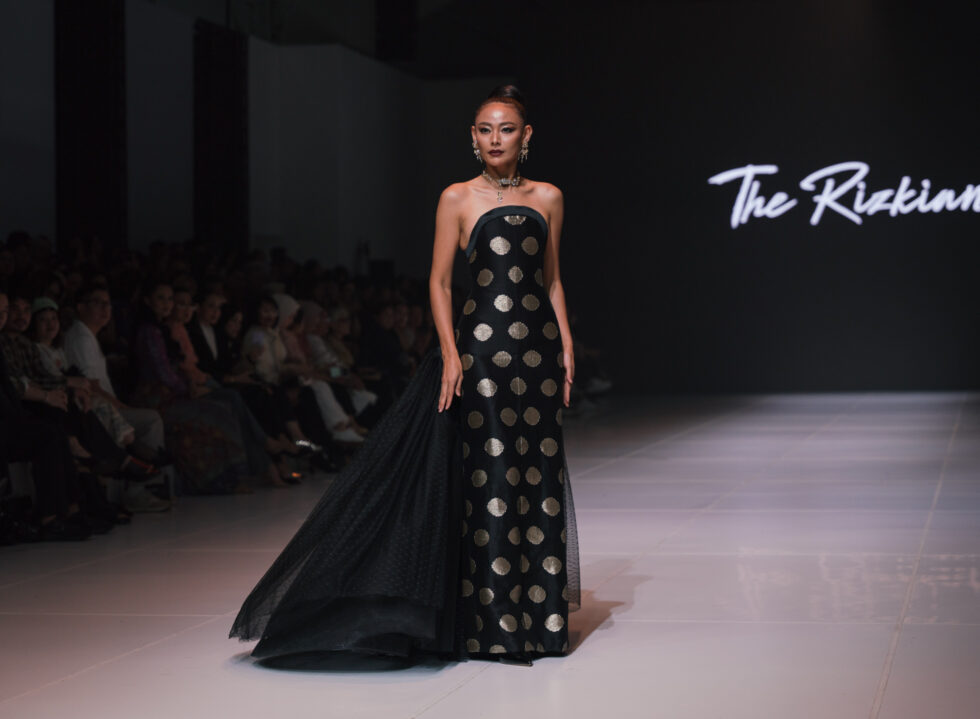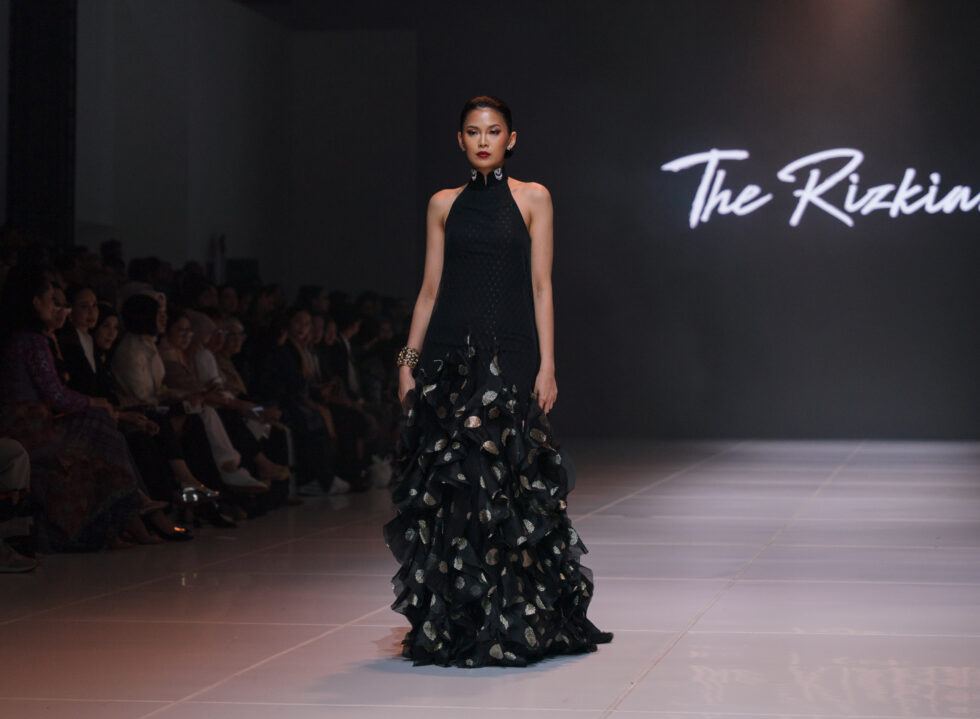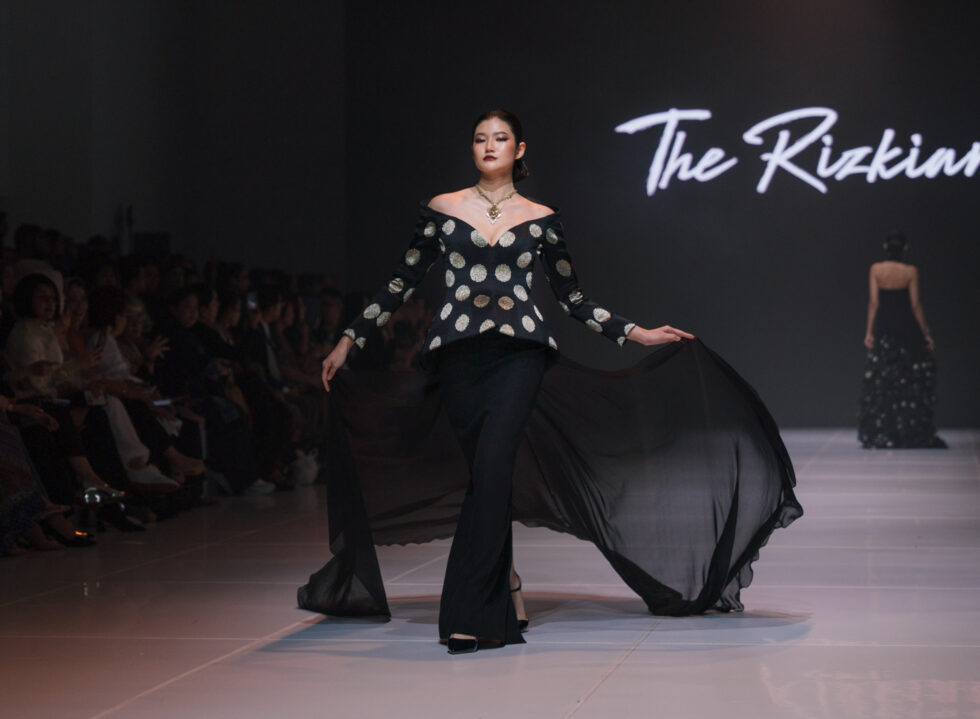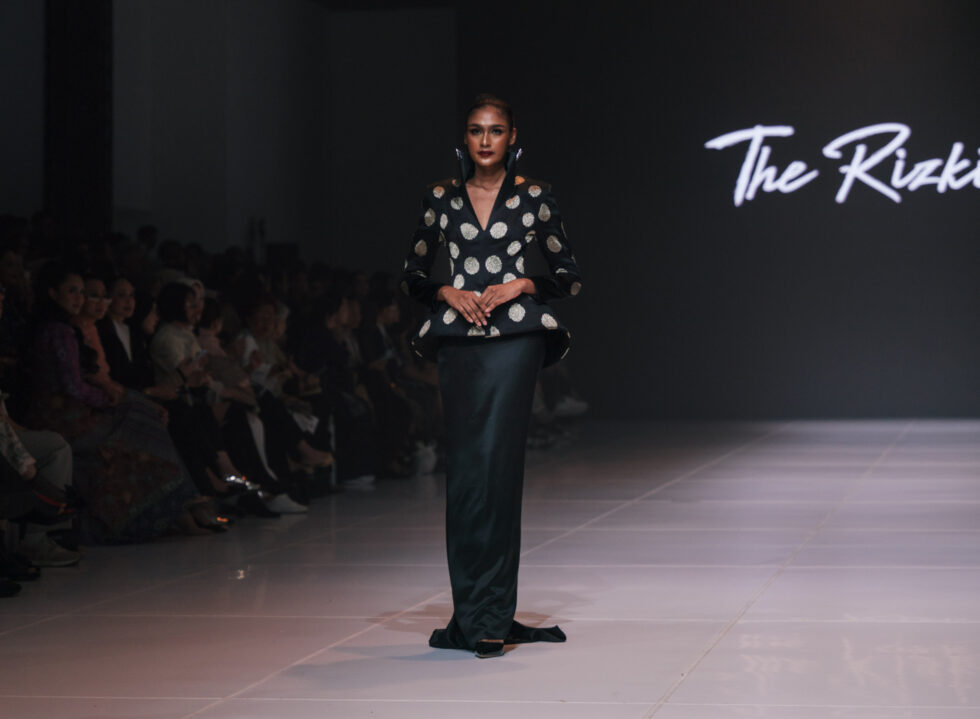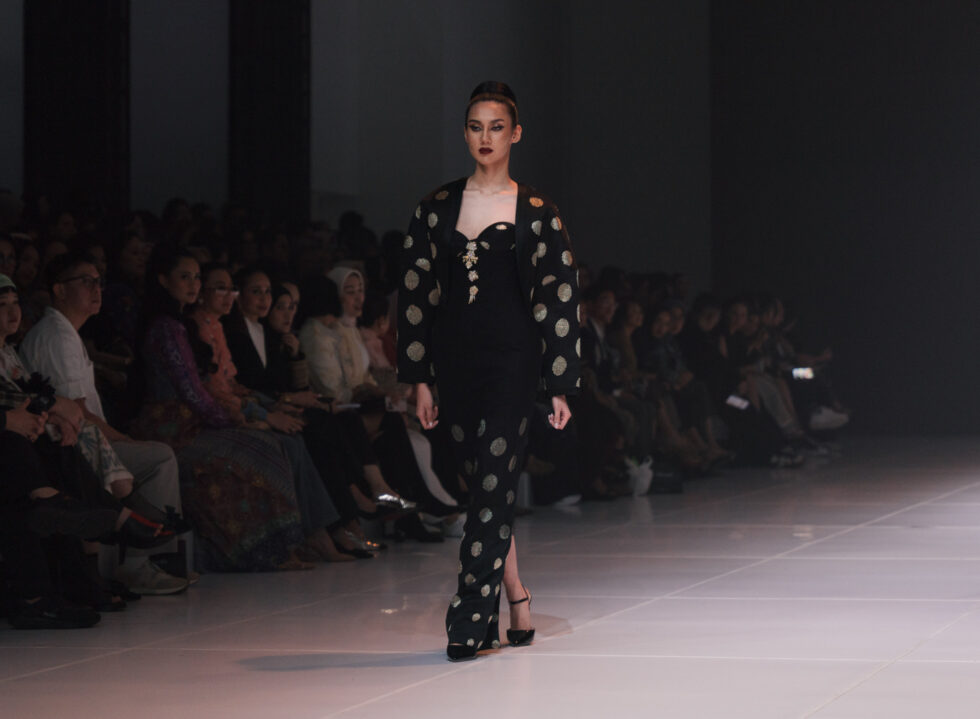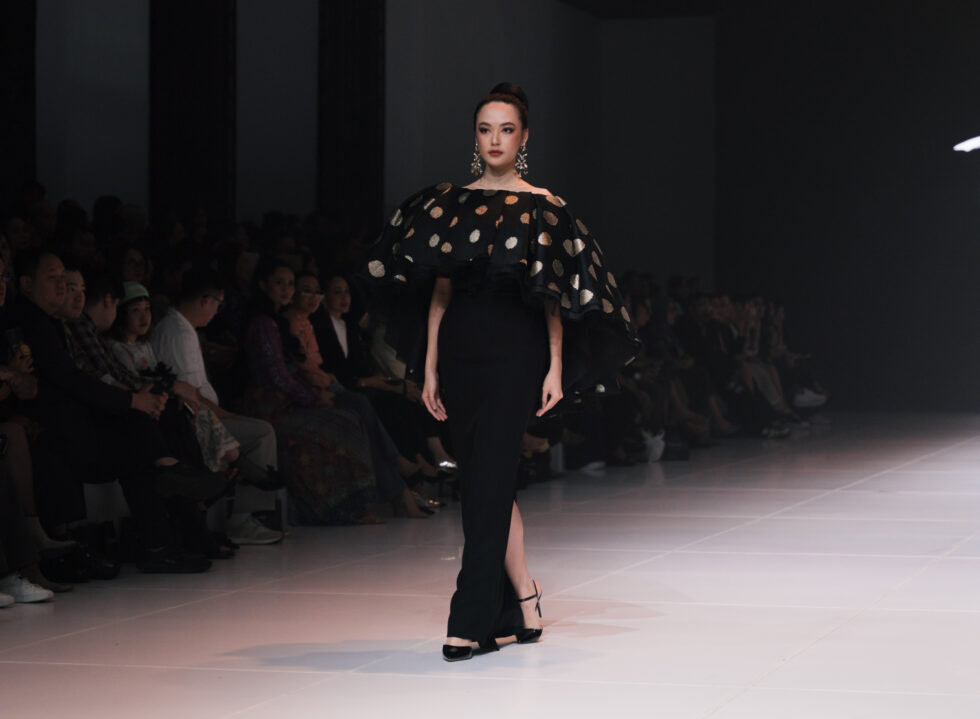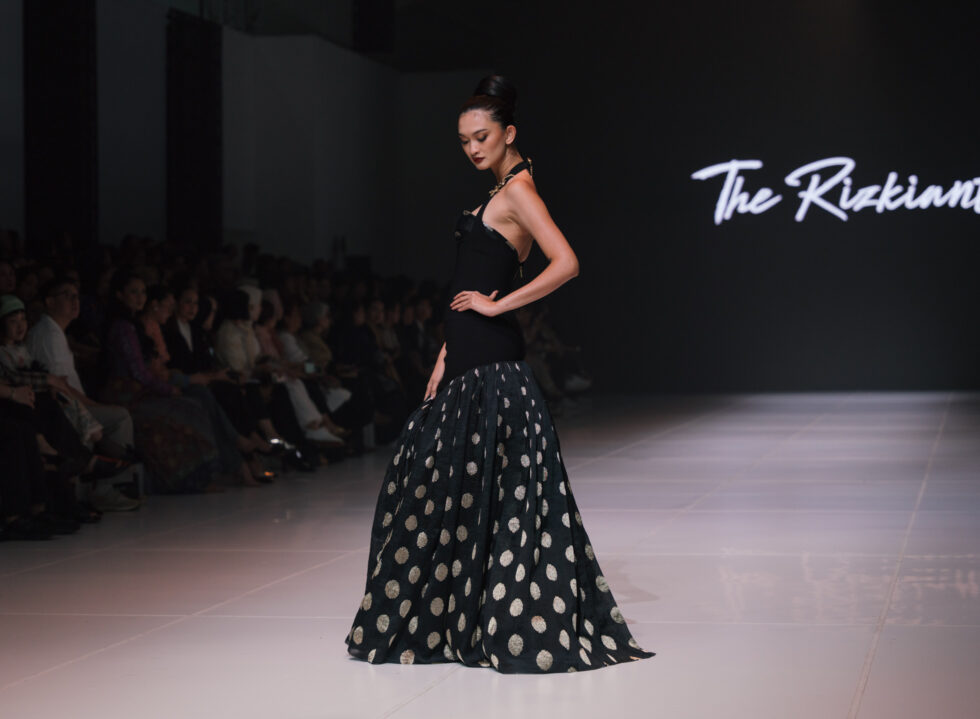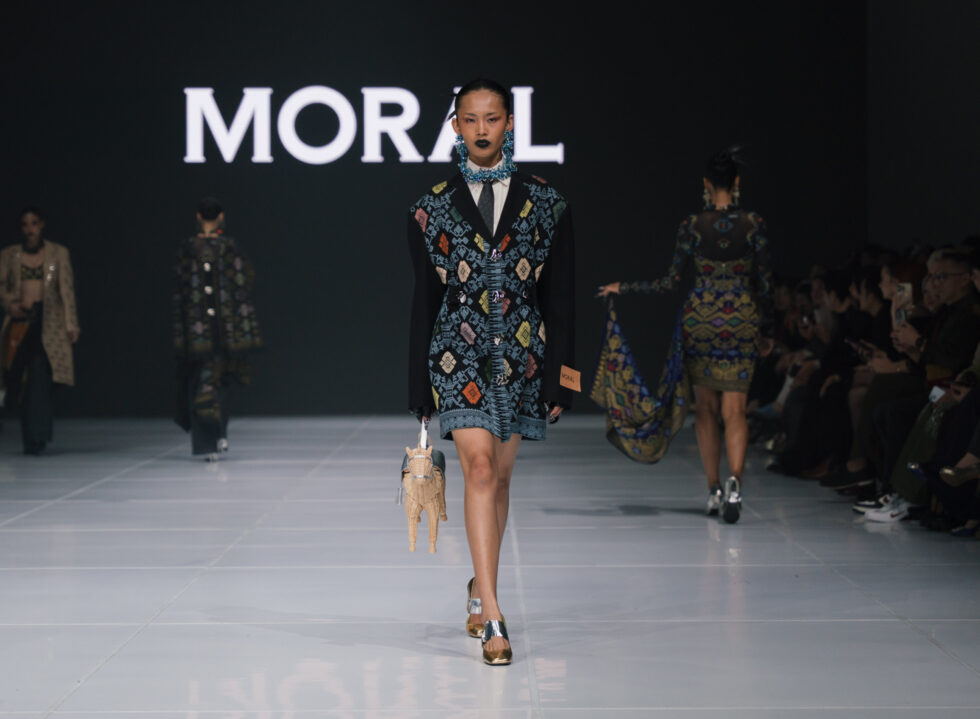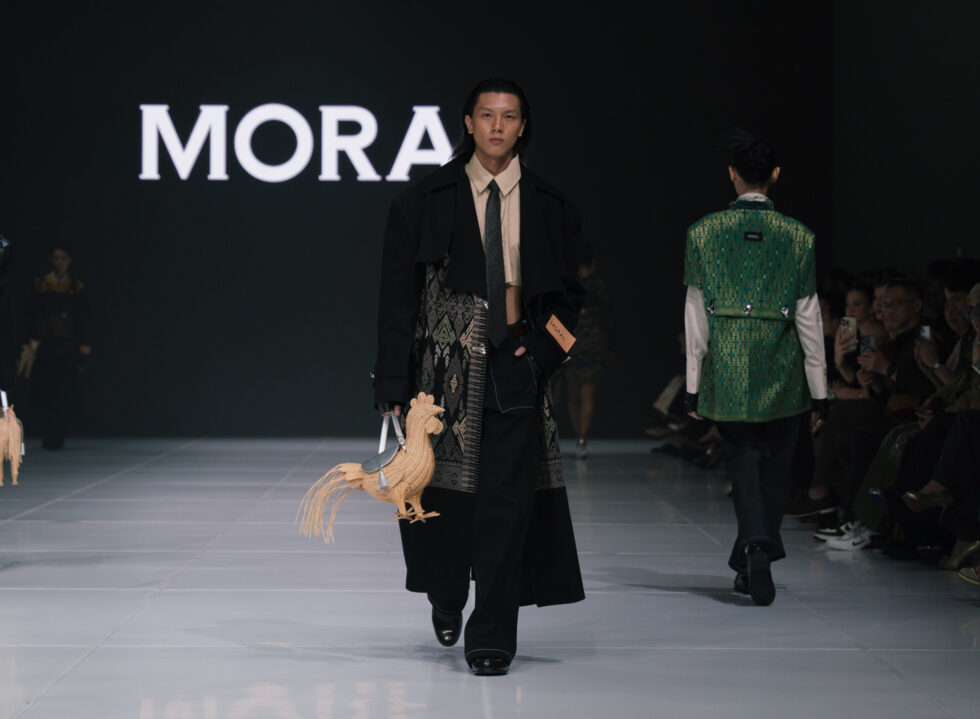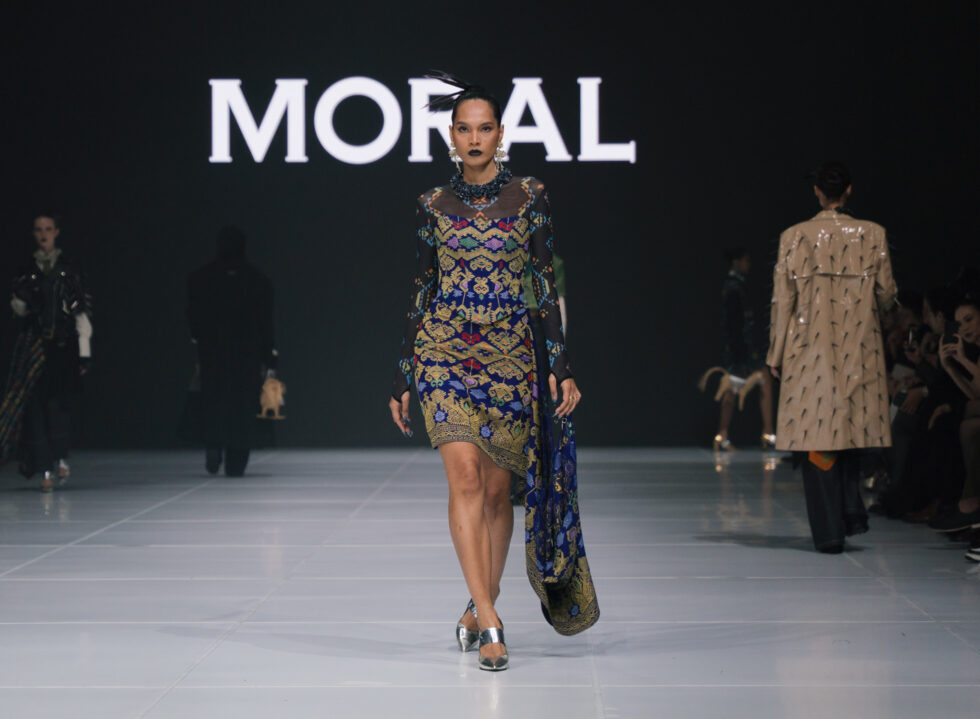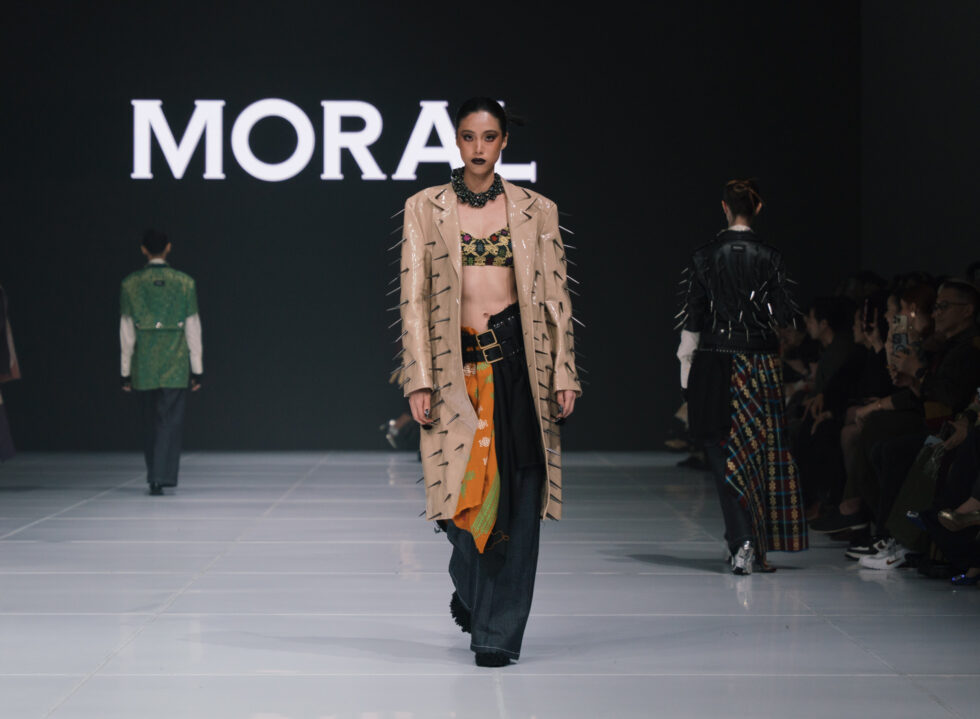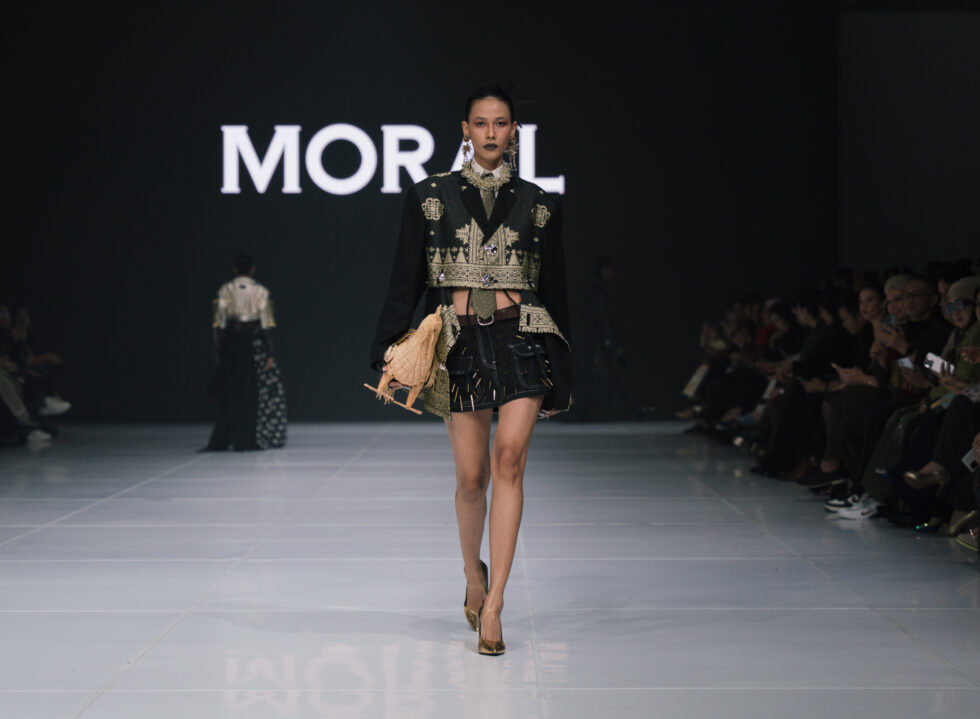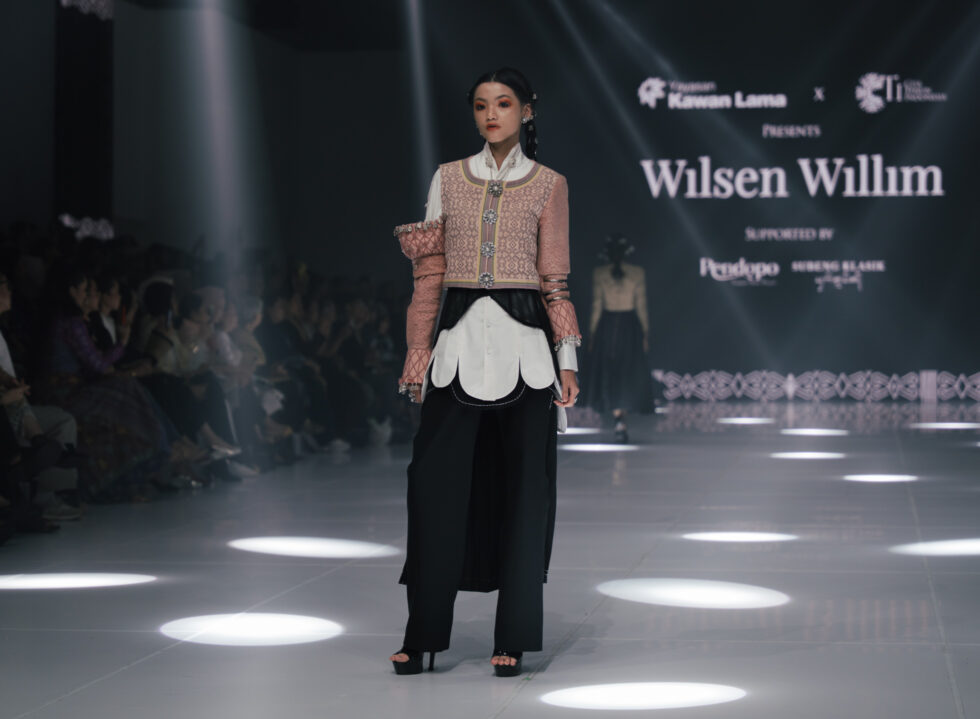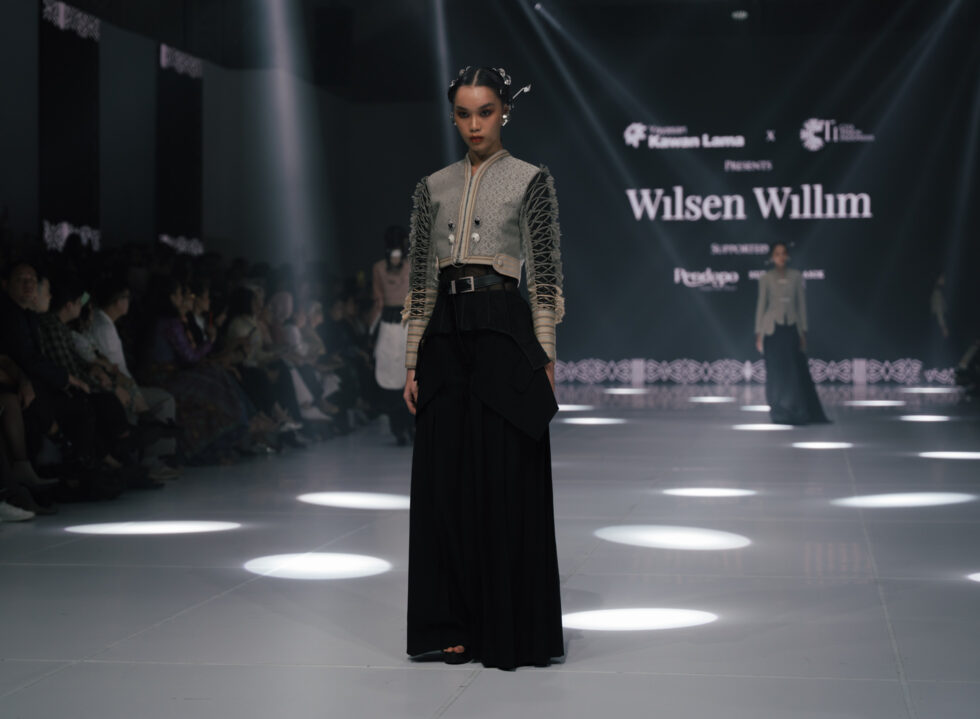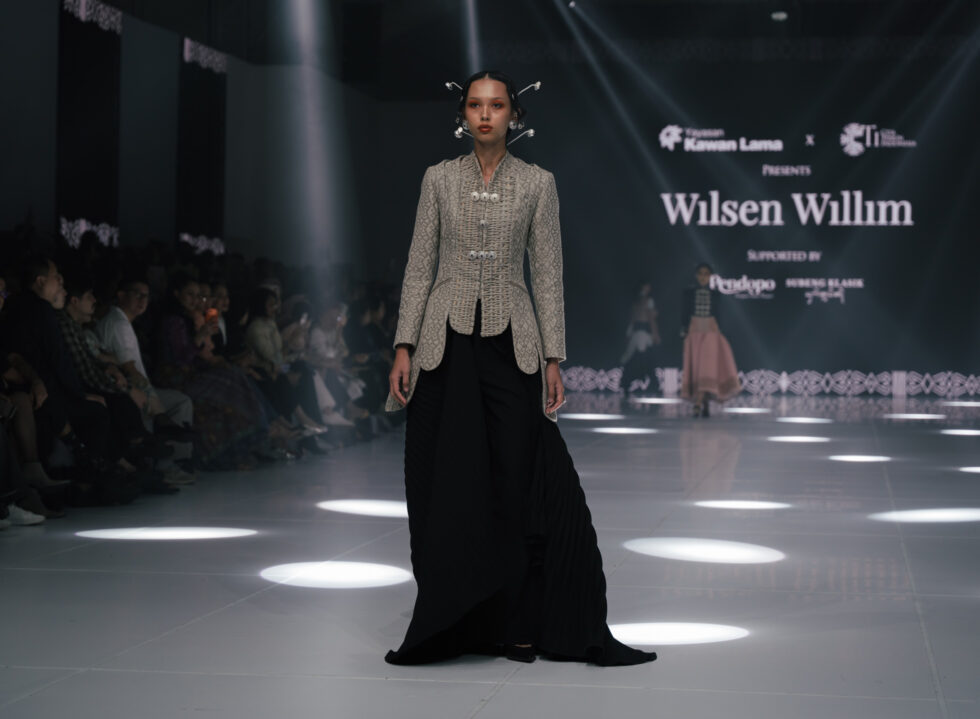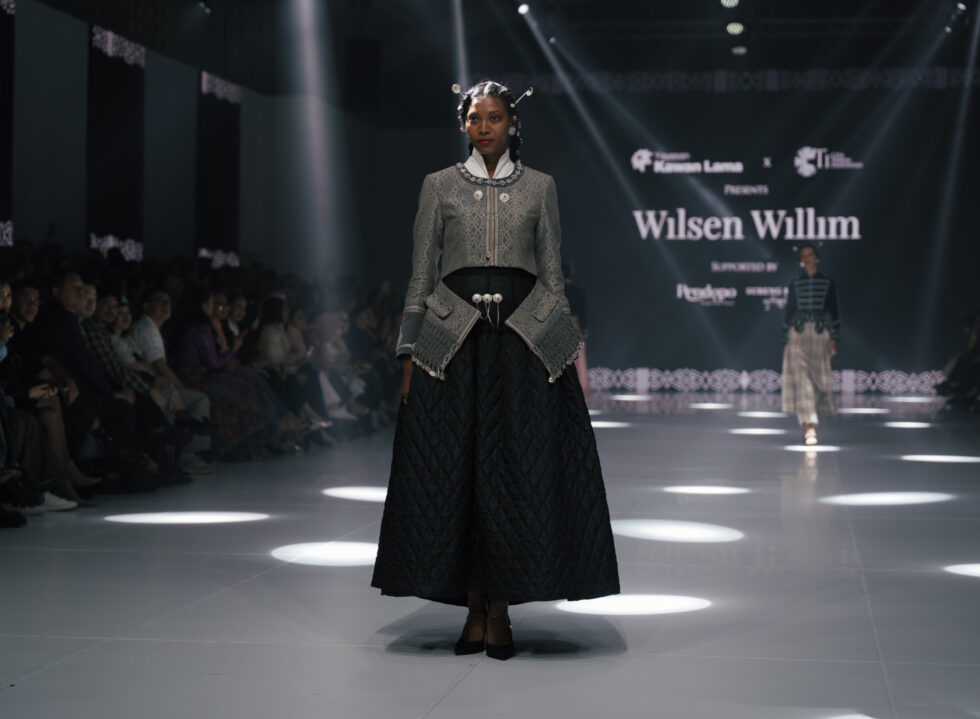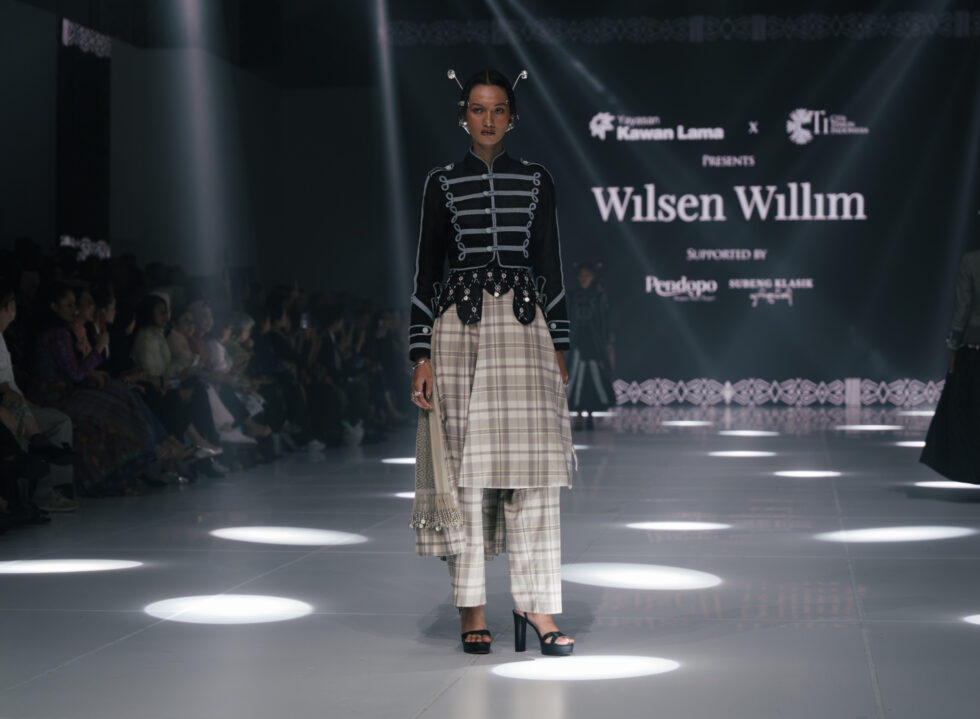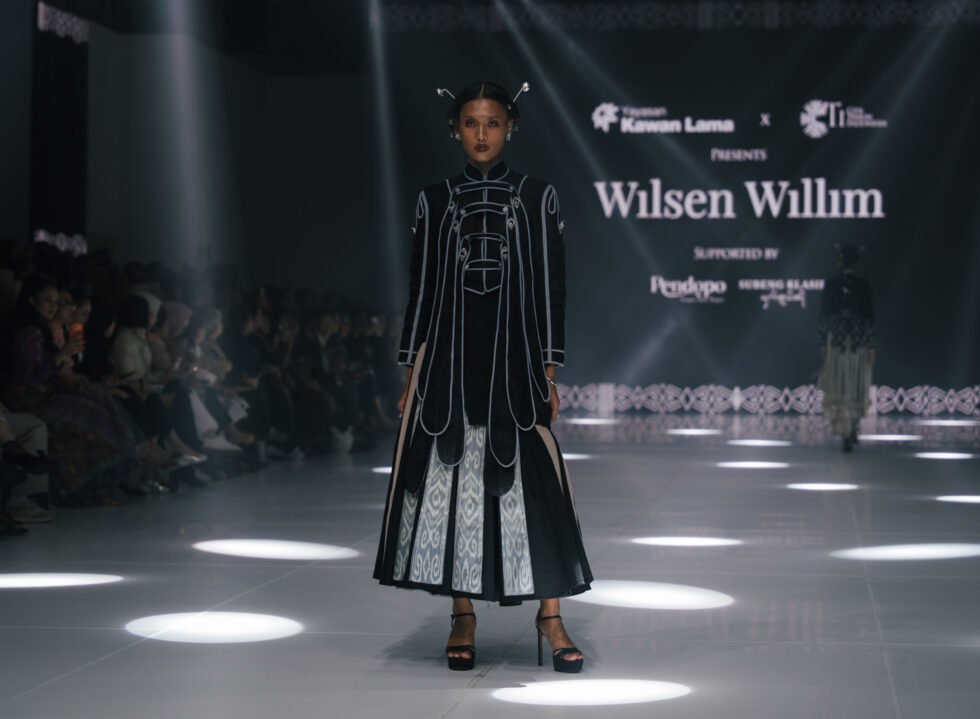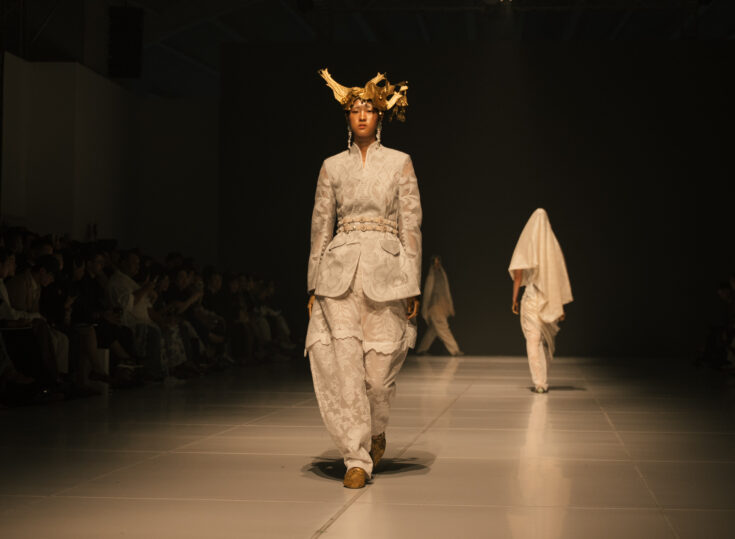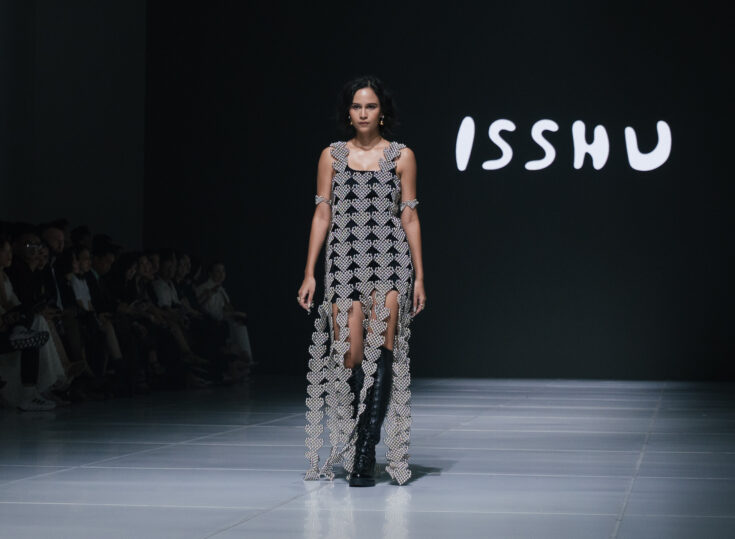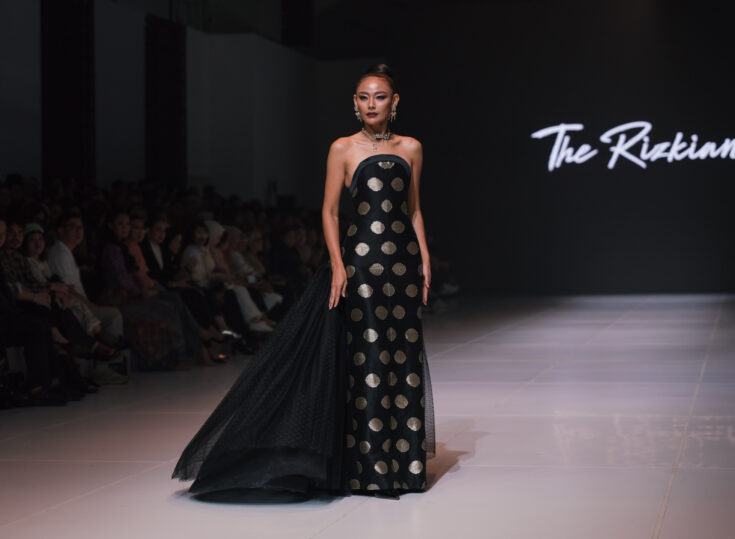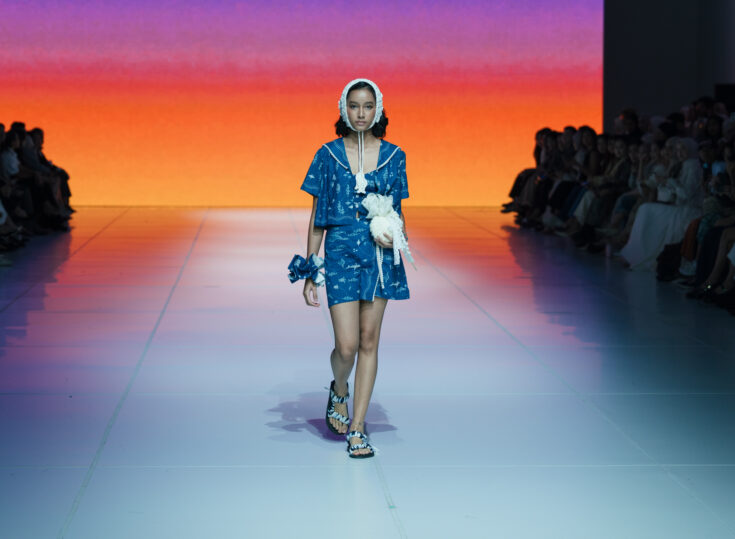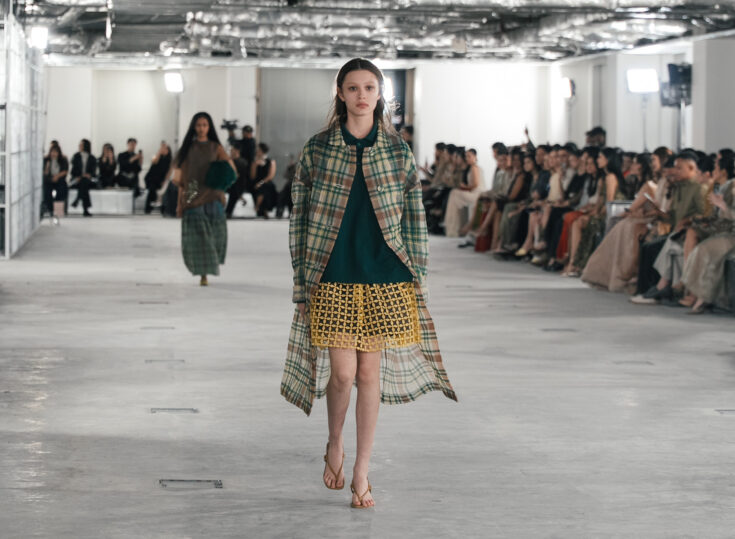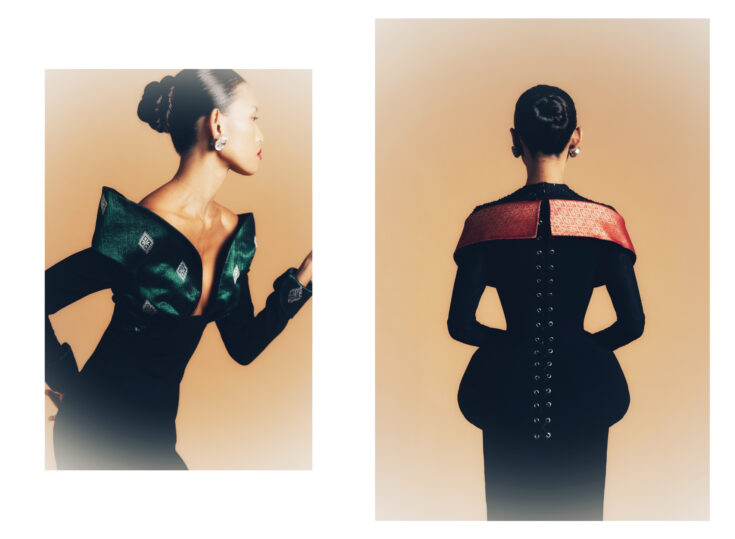The rich traditional textiles of Indonesia, spanning multiple ethnicities and cultures across the archipelago, have been so steeped in history and heritage that people seldom pause to consider what they mean in the context of modern life, or how they can continue to add depth to the nation’s identity beyond the usual symbolism of pride. Last Wednesday evening, Cita Tenun Indonesia — an organisation founded to preserve and develop traditional Indonesian woven textiles — presented a show that explored precisely that idea, interpreted through the eyes of The Rizkianto, MORAL, and Wilsen Willim.
A newcomer to the scene, Dery Rizkianto of The Rizkianto debuted a confident collection that showcased his sharp construction skills and fondness for old Hollywood silhouettes. Still, Dery is careful not to rely solely on existing motifs of traditional textiles. Instead, he collaborated with weavers from Garut to create his own design using champagne-gold metallic threads sourced overseas. “It’s the first time Garut weaving has incorporated metallic threads,” said Dery post-show.
The result was a series of gleaming metallic circles, exceptionally clean in execution and graphic in quality like oversized polka dots viewed from afar. Across the collection, Dery swapped bright colours for somber black, allowing the woven textiles to stand out more vividly. Among the standout looks were a sculpted bodice with a sharp V-neckline, cupped hips, and a stiff collar extending toward the ears, paired with a graceful column skirt; and a halter-neck dress with the textile peeking at the bust and spilling beneath a dropped basque waist.
In an interview article, Dery — who studied in London before honing his craft at Istituto Marangoni in Milan — noted, “When working with traditional fabrics like tenun, it’s easy for the result to feel predictable, and there’s often an expectation of how it ‘should’ look. I wanted to challenge that.” And he did. Dery succeeded in showing how traditional woven textiles can find their place in contemporary fashion, all while gently nudging forward the craftsmanship of tenun itself.
It’s not hard to imagine these looks worn by female dignitaries — first ladies, ministers, ambassadors — on state visits to Indonesia. In a world where women’s wardrobes are often read as political statements, Dery’s creations feel both stately and thoughtful: culturally grounded without veering into appropriation. While many female leaders still rely on monochromatic suits to be taken seriously, it’s reassuring to know there are options that embody strength with quiet dignity without forsaking femininity.
There was something seductively irreverent in the opening look of MORAL by Andandika Suratseja. Woven textiles of Lombok were draped as a scarf-cape over a sheer motocross top featuring geometric patterns that echoed the tenun, tucked into wide-leg denim pants. There was rebellion here — a tension between modesty and modernity. The natural handwoven textiles paired with synthetic printed graphics created a charged dialogue between the handmade and the machine-made. The same tension appeared in a handsome coat featuring a swath of Lombok tenun, worn over a cropped shirt exposing the midriff on a male model.
It was in this interplay — modesty versus sensuality, the handmade versus the machine-made — that the collection felt most alive. At times, however, that balance wavered. The thorn-like spikes on coats and skirts, for instance, felt overly self-aware, disrupting the flow instead of deepening the conversation. Had that tension been sustained throughout, the result could have been even more provocative. A reflection on how traditional textiles must confront taboos to stay relevant in the present day.
Wilsen Willim, meanwhile, delivered a solid collection featuring tenun Iban, a traditional textile of the Dayak Iban people from West Kalimantan. The intricate pua kumbu motifs, historically used on ceremonial blankets, appeared on tailored jackets that were cropped to sit high on the waist paired with long skirts that elongated the body. However, overall the collection lacked a clear point of view. The garments were beautifully made, but they didn’t offer a new context for how traditional textiles could live in the modern world.
Recently, Wilsen announced on Instagram that he would be taking a break — exhausted from months of continuous creation. Burnout has become all too common in a creative industry that demands an unforgiving pace. One can only hope that, after rest and recovery, his next collection will return with renewed depth and nuance.
